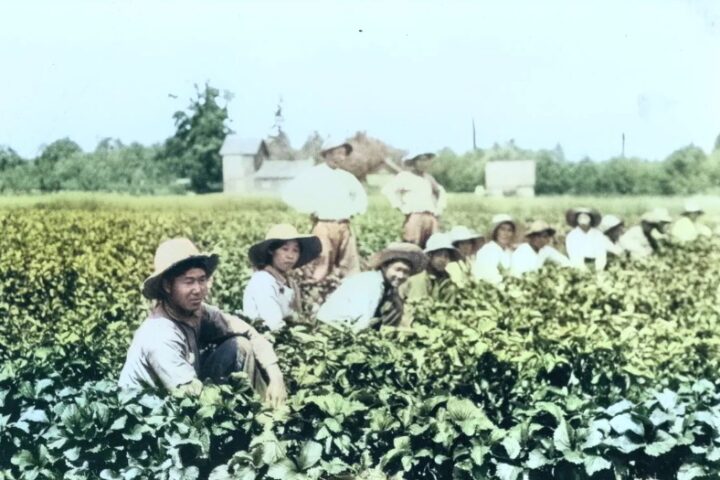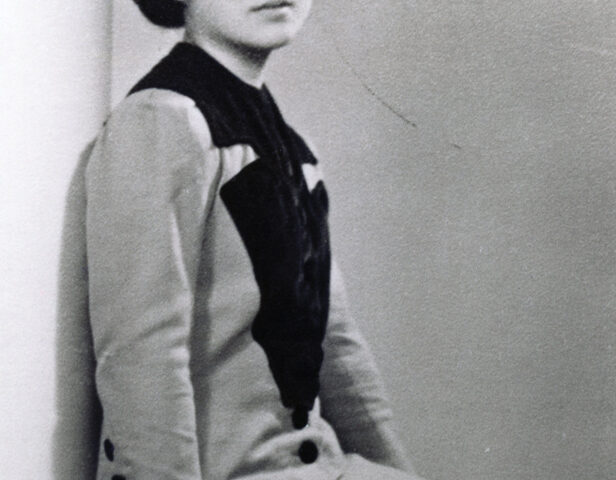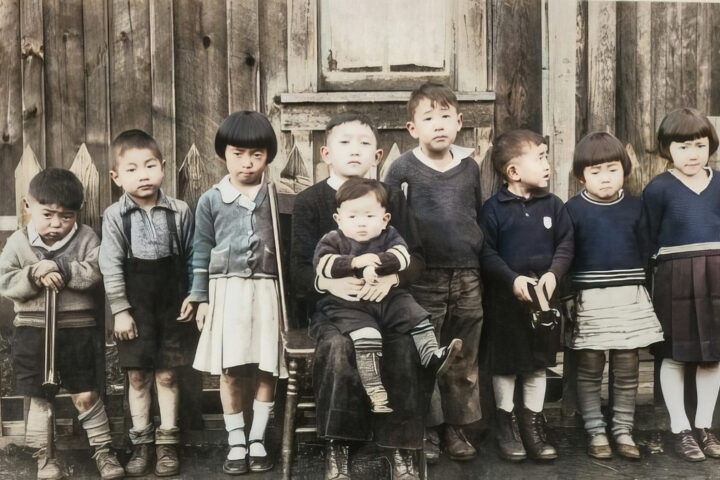Highlights of July Dates in Japanese Canadian History
By Lorene Oikawa, Past President NAJC
In 2023, the National Association of Japanese Canadians (NAJC) is reviewing the highlights of dates for each month, from the period 1941 to 1949. We are looking at the actions of government and the impact on Japanese Canadians.
1942
July 1 The government reverses its controversial policy of separating families. The Japanese Canadian husbands in road camps would be allowed to reunite with their families by winter. The Security Commission announced their plans for expansion of housing facilities in isolated towns in the interior of BC, the Kootenays. Temporary tent towns would be set up until the housing could be built. Housing would be built for two families to live in three rooms. The first of the tent towns was in Slocan.
The incarceration/internment camps in the Kootenays were known as the ghost town camps. Slocan was a bustling town in the late 1800s because of the rich deposits of silver, and the town had 12 hotels, saloons and dozens of stores to accommodate the population of about 1,500. When the ore disappeared so did the people, and the population dropped to 200. With its derelict buildings, Slocan was an ideal location and one of the reasons it was chosen by the Security Commission.
In July, children at Hastings Park are finishing the makeshift classes at Hastings Park. About 8,000 Japanese Canadians from outside of the Vancouver area were first sent to Hastings Park before being sent to incarceration/internment camps. Most of the children of Vancouver residents were able to complete the school year in 1942.
Education is a provincial responsibility, but the BC government abrogated its responsibility, and the incarcerated Japanese Canadians had to quickly organize classes. Hide Hyodo (later known under her married name Shimizu) was the first Japanese Canadian to obtain a teaching certificate in 1926. She helped organize classes at Hastings Park from April to July, and helped to train volunteer teachers. Classes were held in the bleachers and rafters at the Garden Auditorium at Hastings Park. Prior to 1942, the Garden Auditorium was a dance hall with its wooden floor and stage for bands.
1943
The federal government refused to intervene when the provincial government wouldn’t take responsibility for the education of Japanese Canadian children. The Japanese Canadians appealed to the government, the churches and the Co-operative Commonwealth Federation (CCF was the precursor to the New Democratic Party). Grace Woodsworth MacInnis, her husband Angus was the CCF Member of Parliament for Vancouver East, went on a speaking campaign to garner support for schools. Roman Catholic, Anglican, and United churches did pressure the Security Commission and the government eventually did respond by agreeing to fund primary schools in the camps. Short training sessions for volunteer teachers were set up for Japanese Canadians who had high school education. The programs ran in the summer of 1943 and 1944. Hide Hyodo and Terry Hidaka were the only two Japanese Canadians who had teaching certificates (because of government restrictions) and they supervised the classes.
1944
Bill 135, section 5, was passed by the House of Commons in July. The bill took away the right to vote in federal elections for any Japanese Canadian who moved from British Columbia after December 1941.
1945
July 20 The Japanese Canadian Committee for Democracy (JCCD) which had been organized in 1943 published its first monthly journal, Nisei Affairs. [Nisei is a second generation Canadian of Japanese ancestry.] This first issue included an open letter to Prime Minister King protesting “a censorship directive” to Canadian media preventing the public from knowing about the enlistment and efforts of Japanese Canadians in the Canadian army. Earlier in the year, the prime minister had revealed to the House of Commons that the British had recruited Nisei, second generation Canadians of Japanese ancestry. Ken Adachi in his book, The Enemy That Never Was, speculates that concealment wasn’t about security, but that the information would provide damaging for “some Liberal candidates in British Columbia who had partially organized their campaign for the June 11 federal elections around the Japanese issue.”
1946
Mid-July Another protest is started, this time initiated by a group of Issei (first generation Japanese Canadian pioneers) who were World War I Canadian veterans. 60-year-old Sgt. George Yasuzo Shoji, had bought 19 acres of land in the Fraser Valley in 1931 under the Soldiers’ Settlement Act. The twice wounded veteran of the Princess Pats had nothing to show for his “30 years’ work.” His land, a two-story house, four chicken houses, 2,500 chickens, and farm equipment was sold in 1943 without his permission for $1,492.59. After taxes and commissions, he was offered $39.32 which he declined. He said his losses were $4,725.02.
1947
The cabinet dismissed Japanese Canadian losses as negligible. Questions about the disposal of Japanese Canadian property were raised in the House of Commons. The investigation was turned over to the Public Accounts Committee. During the hearings, the officers of the Custodian of Enemy Alien Property admitted there were considerable losses from vandalism. The Committee recommended a commission be appointed to look into the claims of “any person of the Japanese race now resident in Canada for alleged loss which resulted from the amount received by him being less than the fair market value of his property at time of sale or loss.”
July 18 The Commission was set up under Order-in-Council P.C. 1810. BC Supreme Court Justice Henry Bird was appointed as the Commissioner. The terms for the Commission were so limited that it proved to be a cruel disappointment for Japanese Canadians. Only losses from the sale of the properties in the care of the Custodian of Enemy Property could be reviewed, but only if it could be proved that the Custodian failed to “exercise reasonable care” in the supervision or sale. The Commission could not question the selling of property or consider any compensation for civil rights violation or lost income and education, emotional and psychological traumas.
More next month.




